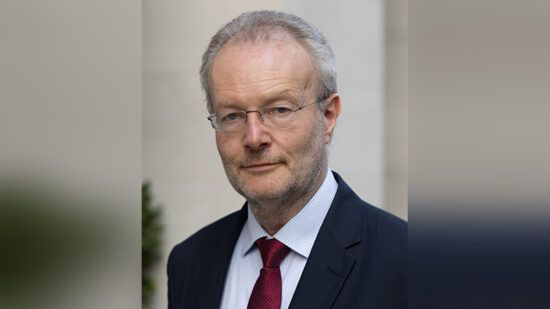Covid‑19 has damaged economies across the globe, but threatens to devastate least developed countries (LDCs).
The real GDP growth rate for LDCs in 2020 is expected to plummet to 0.8%, down from 4.5% in 2018 and 4.8% in 2019. Even before the current crisis, LDCs faced an uphill battle to achieve the Sustainable Development Goals (SDGs).
LDCs rely to a large extent on external finance (i.e. development finance, remittances, and foreign direct investment (FDI), private investment and other investment – each having specific financing purposes), which represents a larger share of LDCs’ GDP (16%) than domestic finance (14%). Globally, a drop in FDI by up to 40% is expected for 2020, which will decimate the financing available for LDCs.
See also: – Putting ‘stupid money’ to good causes
Now, without ambitious development finance and policy responses, there is a serious risk that the LDCs will fail to achieve the SDGs by the target date of 2030. This means millions will fall back into poverty and the global effort to eradicate poverty and spur sustainable development will also fail. To prevent this grim eventuality, the economic investments and government responses to the Covid‑19 health and socio-economic crises must therefore be made with a forward-looking perspective to building forward better and greener.
Blended finance is the strategic use of development finance to mobilise commercial finance towards the SDGs, with a focus on unlocking capital that the private sector would not have invested on its own. Despite increasing interest in and efforts to deploy blended finance in LDCs, to date the poorest countries have not been able to harness the full potential of blended finance to attract private resources.
To address this challenge, the 2020 edition of the UNCDF-OECD Blended Finance in the Least Developed Countries report analyses the state of blended finance in LDCs and assesses the role that blended finance can play in recovering and building forward better from the Covid‑19 crisis. To help meet the significant SDG financing gap in the LDCs, blended finance approaches can use increasingly scarce official development assistance (ODA) resources to mobilise commercial finance at large scale.
See also: – Allfunds reinforces social commitment with UN initiative
Key opportunities for blended finance to tackle the Covid-19 crisis in LDCs
Despite the present challenges, there are opportunities for deploying and scaling up blended finance in LDCs, specifically in response to the COVID-19 crisis. The following key opportunities could be leveraged to increase the scope of blended finance activities in LDCs and ultimately support these countries to recover from the COVID-19 crisis and build forward better.
Expand blended finance transactions to address liquidity and solvency by using debt and equity products. Equity, including early-stage equity and quasi-equity, and subordinated debt, including in local currency, could prove particularly critical as we move from a liquidity crisis to a solvency crisis. However, this will involve taking greater risks in LDC markets; investors’ ongoing perception of these markets as high-risk will likely still hinder the growth of private investment in the medium term.
Manage risk, especially in a period of extreme uncertainty. Risk mitigation instruments need to be used even more strategically in the medium term in LDCs. In such circumstances, blended finance is an effective approach to cover the risks that the private sector cannot mitigate (such as political, market or regulatory risk) and provide risk mitigation in areas where no or limited market solutions are available in this crisis context for de-risking (through e.g. insurance or guarantees).
Support national recovery plans and development strategies. In the wake of the crisis, blended finance interventions should seek to align with national development priorities, as articulated in key crisis response plans and national development strategies. Tools such as the country private sector diagnostics from the International Finance Corporation (IFC), the SDG investor maps from the United Nations Development Programme (UNDP) and the impact mappings from the United Nations Environment Programme Finance Initiative (UNEP FI) could be useful in identifying local sector and sub-sector priorities and more targeted investment opportunity areas.
Prioritise sectors that are key to creating decent, productive jobs. The loss of jobs and livelihoods due to the pandemic risks being more severe than the health impacts. In line with national priorities, blended finance should be prioritised to provide needed capital in LDCs to help protect jobs, sustain the self-employed and support companies’ liquidity and operations.
Support small and medium-sized enterprises (SMEs) as engines for growth. Preliminary findings from a survey on the state of SMEs in LDCs conducted by a consortium of organisations, including UNCDF, show that due to Covid‑19, 87.9% of SMEs reported operating on less than 75% business capacity, 34.6% have laid off staff and 33.9% have indicated that they are at risk of shutting down within three months. SMEs, particularly those in the “missing middle” which are too large for microfinance but considered too small by local banks and development finance institutions (DFIs), will not likely be rescued by government stimulus packages and will struggle to survive the crisis, despite their important role in driving long-term job creation and sustainable economic growth in LDCs. Blended finance vehicles should target this financing gap in LDCs.
See also: – Special Interview with the UN’s Pierre Bardoux: Economies will collapse if more action is not taken
Systematically support women and girls to accelerate the recovery. Women have been disproportionately affected by the pandemic and continue to face disadvantages, despite widespread recognition of the need for gender equality and of its importance for achieving sustainable development. Blended finance investors should consider targeting women-led enterprises and sectors with high shares of female employment more systematically, including by providing liquidity or working capital to financial institutions and intermediaries that incorporate a gender lens.
Catalyse the growth of health-related industries. The crisis has demonstrated the need for stronger health systems in LDCs, and many governments have called for investment support to develop domestic industries to produce vital medical supplies and pharmaceuticals. Blended finance could play a catalytic role in that regard, including supporting the dissemination of vaccines.
Target sectors that are critical for inclusive, resilient and sustainable recovery. Examples include climate-compatible infrastructure, transport and storage, and municipal infrastructure. To harness the digital revolution, blended finance could scale up digital infrastructure and digital business models that help to expand access to a wide range of services for currently underserved populations. In addition, investments in clean energy and blue economy will help build resilience and enable SDG achievement.
LDCs, the world’s poorest countries, already face grave challenges on every level with few resources to address them. Any tools— including blended finance, sustainable development finance, or impact investing— that work to help them should be explored and expanded.








